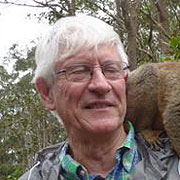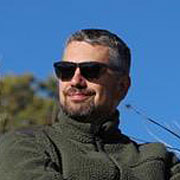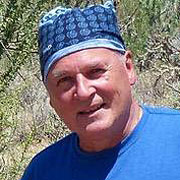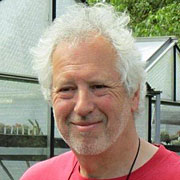Programme 10-11-12 September 2021
-
Day 1
-
Plant sales
-
Opening and lecture
Norbert Rebmann
France

L'endémisme des plantes succulentes à Madagascar (fr)
The endemism of succulent plants in Madagascar
Norbert Rebmann is Honorary Professor at the UPEC (University Paris-Est Créteil), President of the branch “Cactus et Succulentes” at the SNHF (French National Horticultural Society), Secretary General of the AJEM (Association of Friends of the Exotic Garden of Monaco) and Officer of the Order of Agricultural Merit. Moreover, he has carried out numerous missions and trips to Madagascar, sixteen so far, to study this unique flora and to search for new species: two species have been dedicated to him it and he himself has described about thirty of them.
The Red Island has a vegetation of great specificity whose endemism is very high. During the conference, you will be able to see different environments:
• The Tsingy, limestone reliefs sculpted by erosion with their vegetation, Pachypodium and Euphorbias in particular, growing in a thin humus.
• Inselbergs, high plateaus with a marvellous rupicultural vegetation composed of Aloes, Pachypodium and Euphorbias essentially.
• The Bush of the southwest growing on ruby sands with Didierea and Alluaudia, which are majestic plants.
• Finally, the sandstone ruiniform reliefs of the Isalo and Makay massifs with splendid Pachypodium, Aloes and remarkable geophytic Euphorbias. -
Cafetaria
Social gathering
-
Day 2
-
Plant sales
-
Survival of the fattest - film by Neil Curry
-
Lecture
Jakub Jilemicky
République tchèque

The best of Western Cape Haworthias (en)
Le meilleur des Haworthia du Cap-Ouest
Jakub Jilemicky a terminé sa formation en Études du Territoire International avec Tourisme comme matière principale. Il a fait sa thèse sur le tourisme en Afrique du Sud et ceci a ouvert la porte vers les plantes succulentes de ce pays. Jakub s’intéresse particulièrement pour les genres Haworthia, Gasteria, Astroloba et Conophytum, qu’il étudie depuis plusieurs années. Il a passé plus de 2 ans en Afrique du Sud et maintenant encore il visite ce pays souvent. Il a parcouru également d’autres pays d’Afrique australe comme la Namibie, le Botswana, la Zambie et le Zimbabwe, surtout comme guide touristique. Il est le créateur du site web haworthia-gasteria.blogspot.com comme son nom l’indique, aux genres Haworthia, Astroloba et Gasteria.
La conférence de Jakub titrée “Le meilleur des Haworthia du Cap-Ouest” montre environ 300 images, majoritairement d’Haworthia mais également de Conophytum, Gasteria, Astroloba etc. Au cours de la conférence, il vous montrera la grande diversité de la flore succulente dans cette partie de l’Afrique du Sud mais aussi une visite à Namaqualand, le Pays du Vin, la Route-Jardin, le Petit-Karoo, pour terminer ensuite dans le Grand-Karoo.
-
Meeting International Euphorbia Society
-
Survival of the fattest - film by Neil Curry
-
Lecture
Klaus-Peter Kleszewski
Germany

Die Sonora Wüste sowie angrenzende Regionen im Wechsel der Jahreszeiten (de)
The Sonoran Desert and adjacent regions in the changing seasons
Thanks to his mother, who grew several Echinopsis on the window sill, Klaus already got in touch with the spiny desert inhabitants as a young boy. Especially when the nightly, fragrant flowers opened. Then it happened, the cactus virus infected him and now makes an integral part his life. It has been with him for almost 50 years. Although there was a short time in which other priorities such as work, girlfriend, wife and children were more important, this did not stop him from building his own small greenhouse at a young age. At that time, he collected almost exclusively Southamerican cacti. He was taken especially with the genera Rebutia and Sulcorebutia. Of course, each specimen was photographed extensively and closely observed. Several journeys with cactus friends through Mexico and the impressions of the local cactus world gave rise to the love for the genus Astrophytum. It has remained to this day and has been presented in two printed publications. For years now, talks at cactus exhibitions as well as at meetings of cactus lovers have become part of everyday life. His professional career as a project manager for SAP made it possible for him to work regularly in Arizona for more than two years. The scarce leisure time was always used for visiting cacti or for short excursions in the area. The resulting image material is reflected in the lecture.
In his talk Klaus-Peter Kleszewski shows the annual cycle and the changing faces of the Sonora and the surrounding regions. Starting in the winter months and the associated resting phase for the plants, the spring follows with the only short-lasting flowering period of the wildflowers, which dress the semi-desert in a brilliant sea of colours. As the temperature rises, the appearance of the landscape changes. At the same time, the flowering period of the cacti begins in the desert region as well as in the surrounding mountains. Plants of the cactus genera Opuntia, Echinocereus, and Carnegia, to name but a few, with their thorns and flowers, will be included in the presentation. The talk concludes with impressions from the late summer and the associated flowering of the ferocacti. In addition to a number of plant genera, the impressive, imposing sceneries of Arizona, Nevada and Utah will be part of the presentation.
-
Survival of the fattest - film by Neil Curry
-
Lecture
Paul Theunis
Belgium

Uruguay in een notendop (nl)
Uruguay in a nutshell
Professionally, I've been working in the chemical industry for years, about half my career. The other half I went through life as a self-employed person, in an entirely different business: that of the framing sector and the arts, with my own art gallery. I’ve left all this behind me and have gone "at rest". Only, that word "rest" makes me restless! Fortunately, 38 years ago I discovered the word “cactus”. That's why I always knew that later on, after my active career, I could continue that great hobby, on which I have spent all this time with great pleasure so many hours. Through our travels (our = my wife and I) I had also started compiling lectures about all the discoveries we've made, mostly in South America. This takes a lot of time but also gives a lot of satisfaction. Furthermore, I am a fervent walker, a daddy of two children, a grandfather of three grandchildren, one of the four guardian angels of our parents who are still among us, and busy with some other activities! What I will I do tomorrow is always fixed in advance and at every emptiness we just dive into the greenhouse. This always brings peace and there is always something to learn. Long live our hobby!
The title of my lecture is "Uruguay in a nutshell". For a moment I have been thinking of making it "in a notoshell", because of the many Notocacti we came across, but in the end, it was more than only Notocacti! As a Gymnocalycium lover, I have the need to see as many of these plants as possible in their habitat. In Argentina, we have already visited many of these places, so some variety can't hurt. On top of that, it is said that the habitats are in a poor condition: what is the truth? That's what I'm trying to answer or at least to form an idea of the state of the population in this country. That explains “in a nutshell”: to give as much information as possible in a relatively small time span. After all, there are also Fraileas, Opuntias and Cerei on the menu.
-
Cafetaria
Social gathering
-
Day 3
-
Plant sales